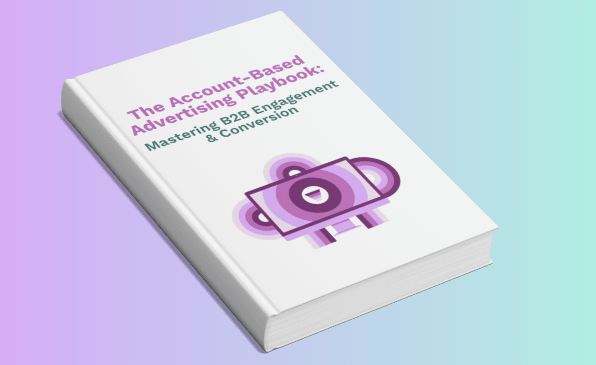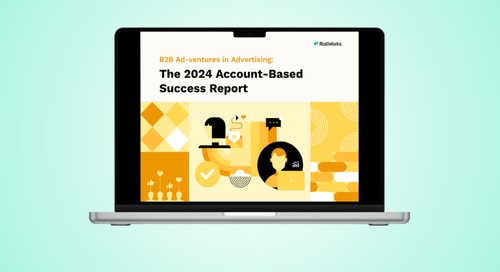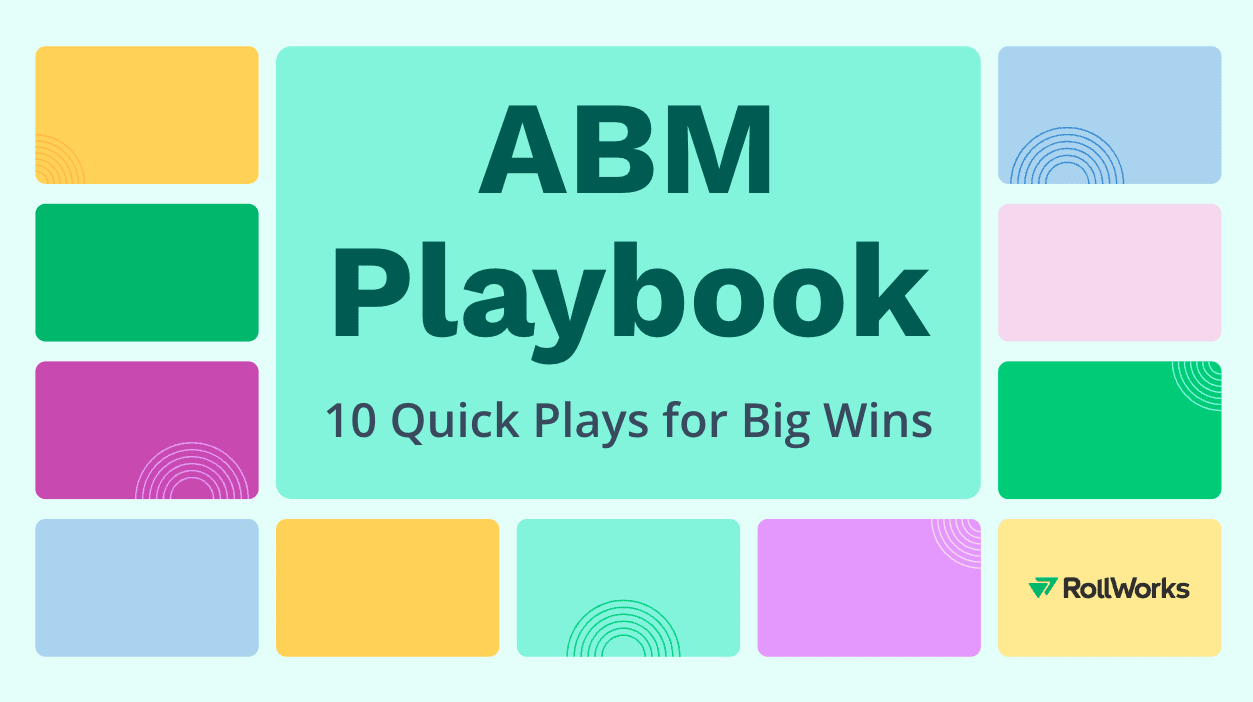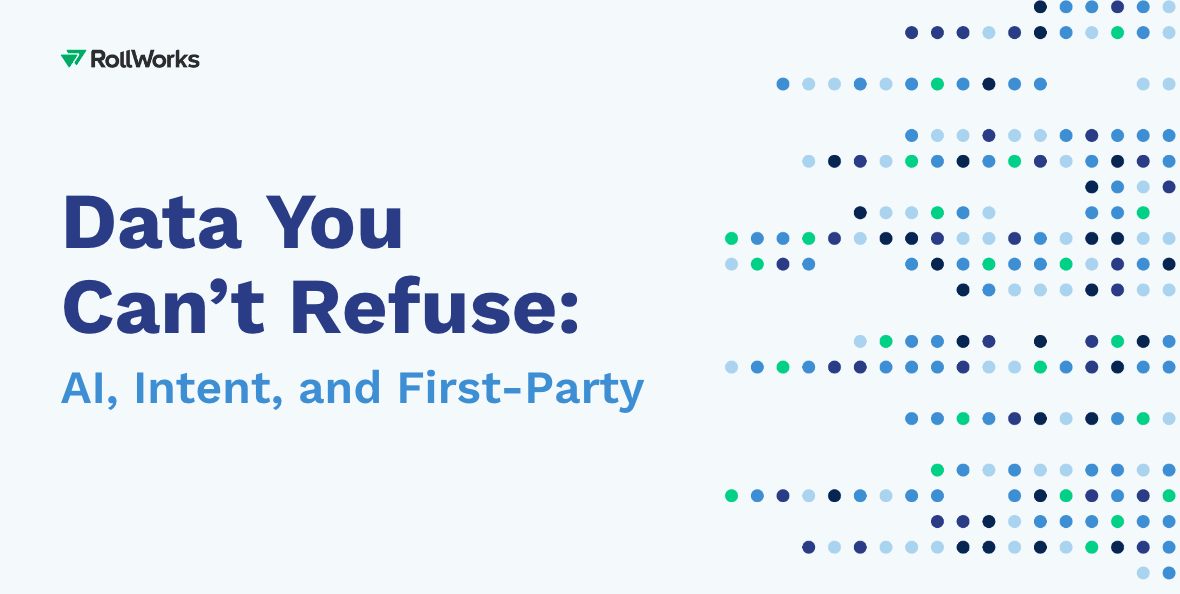One of the most compelling B2B stats you don’t hear very often is: Zero percent of your customers were ‘unaware’ of your brand when they bought from you.
That’s right: 100% of the deals you’ve closed were aware of you. While that may seem pretty obvious, it should be an ‘ah-ha’ moment for most. Cue why multi-touch, full-funnel display advertising has been at the core of nearly all marketers’ revenue-driving strategy— especially as more and more teams adopt account-based approaches.
Year over year, advertising investment continues to grow (even with all the debate over a potential recession) as display outpaces search — signaling the channel will only hold more power over your marketing mix (and you guessed it, your budget) despite shifting market conditions. As the largest line item in your account-based or digital media budget, there’s no room to risk it on ineffective or inefficient targeting. If you’re looking to drive a material pipeline and keep getting buy-in for the results of your efforts, you have to do it right.
That’s why simply doing B2B advertising isn’t the same as doing the best B2B advertising. And as competition for audience attention only heats up, settling for the status quo won’t support the hyper-growth track you’re on. Given 85% of your target audience is likely not ‘in-market’ right now, you can’t afford to risk the success of your strongest awareness (and conversion) engine.
Here are the 5 things you need to know to make (not break) your B2B advertising strategy:
-
Data Volume + Quality Above All Else
-
Depth + Breadth of Reach
-
Diversity in Full-Funnel Tactics
-
Degree of Efficiency
-
Detall of Campaign Management + Ease of Tracking
1. Data Quality + Volume Above All Else
Let’s say you just bought a Ferrari (congrats to you!), and the first thing you did was drive up to the gas station and fill up on regular gas. You’d be pretty disappointed by the performance, not to mention looking like a bit of a car novice.
When you think about advertising, it’s not too different — for premium performance, you need premium inputs. And that’s your data. If an advertising partner is just selling you the Ferrari without talking about the fuel they have to help you drive it, it’s time to ask some real questions:
-
What data suppliers do you partner with?
-
Do you use machine learning to confidently score and identify patterns across sources?
-
Do you just rely on IP data?
-
How are you future-proofing your data along party lines?
You should be able to get clear insights into the quality and volume of data at your fingertips, from how you’ll be able to reach your full audience with confidence.
2. Depth + Breadth of Reach
Simply put — where you show up, and how you can show up, comes down to your access to suppliers. If you want to be top-of-mind for your audience, you need direct access to the best suppliers in the market.
If you’re turning to an advertising platform, they should at least be offering you something you couldn’t access on your own. The top questions you should ask to make sure you’re getting the best access?
-
Do you plug into various exchanges — Display? Native? Video?
-
Do you support supply path optimization?
-
Do you have your own infrastructure for partnerships or do you rely on outsourcing? (major red flag)
-
What level of site de-anonymization do you offer for retargeting?
At the end of the day, if you want your brand + solutions to be in the right place, at the right time, more often, and for less investment — these answers will start to reveal whether you’re trusting your strategy with the right tech.
3. Diversity in Full-Funnel Tactics
Gone are the days (were there really ever these days?) when marketing was linear, to one person, at one moment — and then a deal is won. You have to navigate different people, with different roles with different needs at different times, and that’s just within one account. Multiply that by your entire list of accounts, and you’ve got a lot of complex data points needed to sustain a multi-stage, multi-persona, multi-channel strategy.
That’s why you need a full toolkit of tactics to build a strategy that stands out against your competition (quickly). Here’s what you need to find out:
-
Can you help me reach personas and accounts not in my database?
-
Can you help me switch up messaging based on the sales stage?
-
Can you help me personalize messaging?
4. Degree of Efficiency
Doing ads manually and all by yourself? You probably wouldn’t be reading this if you believed that was the best way to win at your ad strategy (or you’ve learned the hard way that it just won’t cut it). But when you rely on tech to supercharge your performance, there are a few questions you need to think about when your time and money are on the table.
-
How does the tech improve cost efficiency in my campaigns?
-
What aspects of my campaign can I automate, and how much time can I save my team as a result?
-
How easily can the technology scale with my business needs as my campaigns grow?
-
How well does the tech integrate with my current marketing stack?
-
How does the technology assist in data analysis and reporting?
5. Detail of Campaign Management + Ease of Tracking
For most marketers, goals shift and new ideas flow — meaning you’ll likely want to launch new campaigns quickly or allot budget differently as you continue to build out your strategy. And what's at the core of all this nimbleness? A solid campaign management and tracking setup. It's about making smooth changes on the fly and diving deep into the data to see what's hitting the mark (or missing it) in real-time. Here's what to keep an eye on:
-
Is the platform intuitive, letting you tweak and launch campaigns on the fly?
-
Can you dissect your data by key demographics, behaviors, and outcomes?
-
How quickly can you access and act on performance insights?
-
Are you able to integrate seamlessly with other tools for a holistic marketing view?
-
By nailing down these aspects, you unlock a level of agility and insight that keeps your advertising strategy sharp and effective.
Future-proofing the power of advertising
In the end, nailing your advertising isn't just about getting your name out there; it's about creating genuine connections, understanding the people you're talking to, and delivering something that truly resonates with them. By focusing on quality data, reaching the right spots, mixing up your tactics, keeping things efficient, and staying sharp on tracking, you're not just playing the game—you're changing it.
Ready for the future? With this approach, you're not just prepared; you're setting the pace for what's next in B2B marketing. Experience the RollWorks difference: account-based everything, made simple and impactful. Book your demo now today!.
































